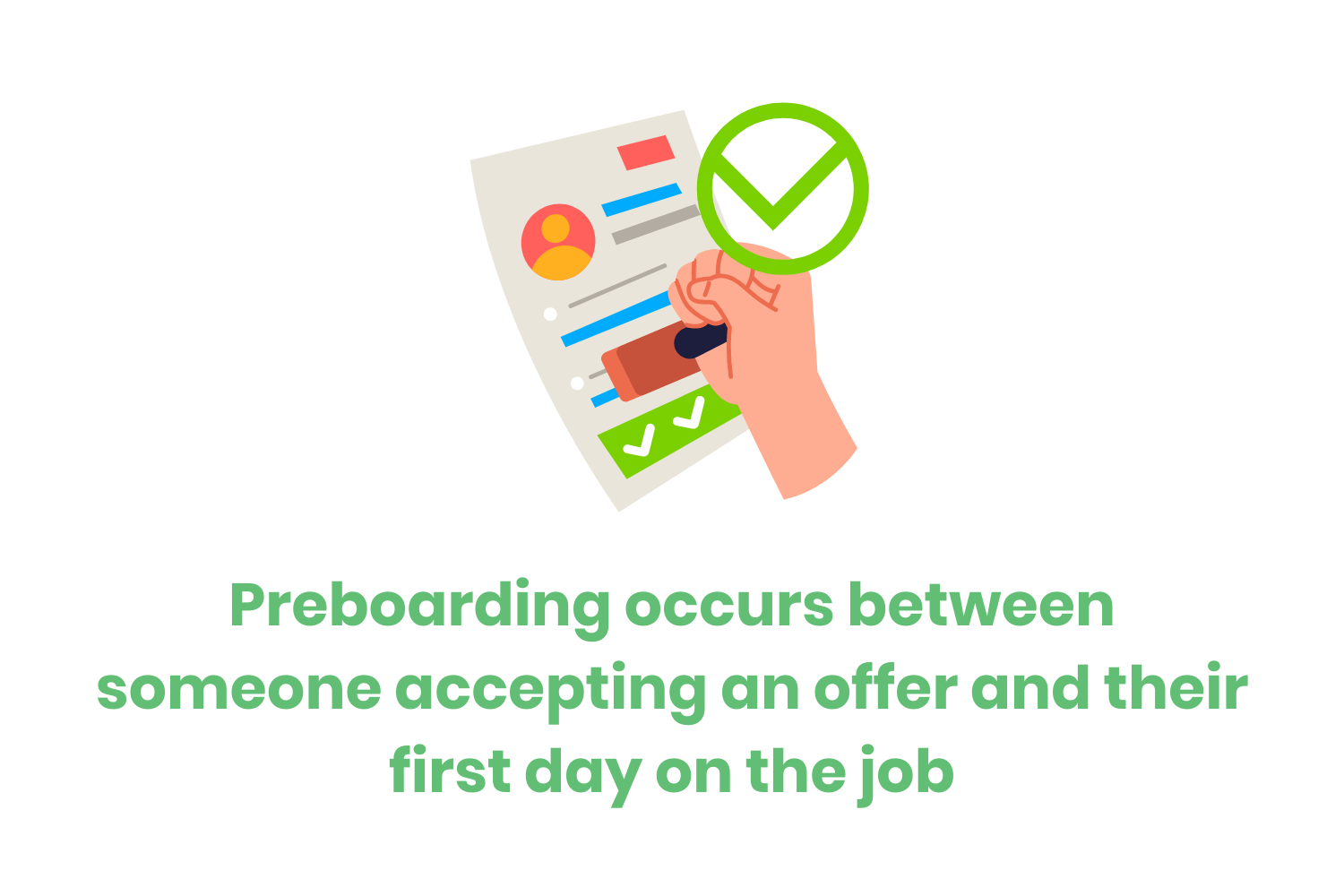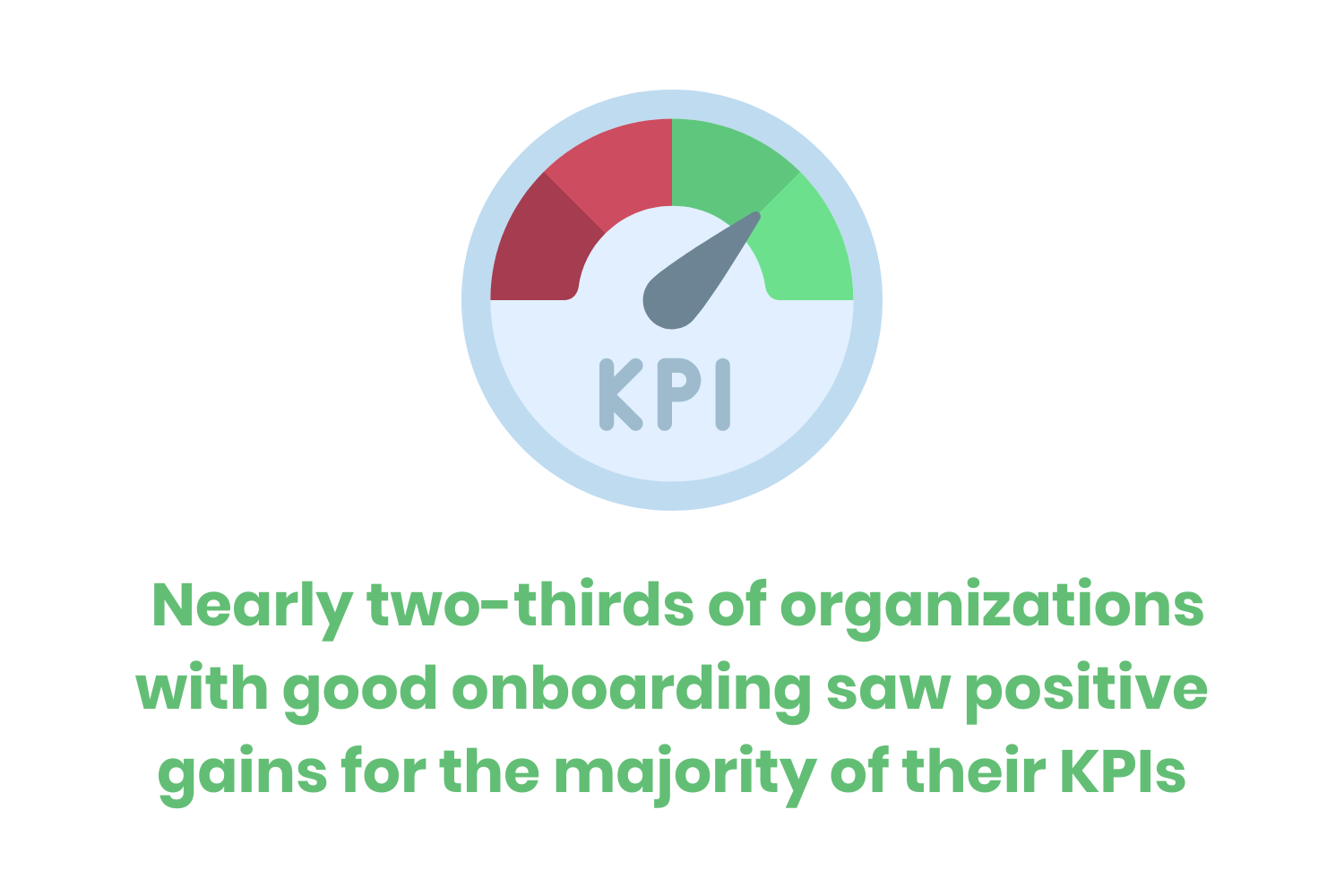Starting a new job can be exciting for anyone. It’s a chance to gain more professional experience, improve skills, and meet more people.
But this also comes with some anxieties. What if they don’t think I’m good enough? What if I make a mistake? What if I don’t mesh with my new team? This self-doubting is natural for anyone.
As a company, you don’t want your incoming staff to already feel stressed before they even start. While it’s normal for them to feel like this, you don’t want to make it worse.
This is where your onboarding process comes in. Since this is the first experience that people have with your company, it sets the tone for how they transition into their role. If they have a poor first impression, it would give them a reason to leave.
But if the experience is exceptional, then they’ll maintain their positive attitude and opinion towards your company. It will quickly make their anxieties fade and they’ll feel eager to be in their new role.
Either of these scenarios is possible depending on the company’s onboarding. This is why it’s so important to perfect the process.
To emphasize this point, below are over 20 employee onboarding statistics that show what this experience should (or shouldn’t) look like.
Table of Contents
General Employee Onboarding Statistics
40% OF ORGANIZATIONS BELIEVE THEIR ONBOARDING PROGRAMS AS LESS THAN MODERATELY EFFECTIVE.
An effective program improves key talent metrics. Organizations that implement them are consistently winning over talent. But the problem is that many companies don’t have effective onboarding. This sets the stage for the person’s time with the organization.
Therefore, if initial training isn’t effective, then employees wouldn’t start with a positive outlook. This would make it difficult to retain them as part of your team.
ONLY 37% OF BUSINESSES HAVE ONBOARDING PROCESSES LONGER THAN A MONTH.
(Aberdeen)
Some onboarding programs last well after the first few days. After all, some careers involve so much information for the new hire to effectively do their job.
Yet, the majority of businesses don't provide training for longer than a month. This doesn’t necessarily mean that the training isn’t effective. Some positions don’t take much time to transition into, especially depending on the person’s previous work and how fast they can learn.
But for jobs that do involve extensive information and training, it doesn’t hurt to make this onboarding longer.
83% OF HIGH-PERFORMING COMPANIES START THE ONBOARDING PROCESS BEFORE THE NEW HIRE’S FIRST DAY.
Preboarding occurs between the time that a person accepts their offer and their first day on the job. This period helps an employer start establishing a good first impression.
The reason why so many companies use this process is that it makes the transition more efficient once the person does start. They can get some of the paperwork out of the way so that there’s more time for job-related tasks on the first day.
58% OF ORGANIZATIONS’ ONBOARDING PROGRAMS FOCUS ON PAPERWORK AND PROCESSES.
New employees must complete paperwork and receive training that covers processes. But making these the entire focus of onboarding can cause people to feel bogged down.
Instead, managers also try to emphasize the more exciting parts of the job. This could include company culture and values, getting to know the team, and touring the facility.
47% OF BUSINESSES USE THE “BUDDY” SYSTEM FOR ONBOARDING PURPOSES.
(Together)
The buddy system pairs a new hire with a long-time employee. The experienced individual acts as a mentor and resource to the new person, offering support as needed.
This tenured employee can answer any questions that their buddy has and teach them processes that are relevant to the position. This buddy system is also great for helping the new team member meet their coworkers and find their way around the office. After all, this long-time employee already knows the team and how to navigate the building.
93% OF EMPLOYERS SAY THAT A GOOD ONBOARDING EXPERIENCE IS CRITICAL IN INFLUENCING A NEW EMPLOYEE’S DECISION TO STAY.
It’s a good thing that almost all employees agree with this because it reiterates the importance of having an exceptional process. Onboarding is often directly connected to retention rates.
If team members feel lost or unsupported, they may choose to go somewhere that will give them better guidance. A negative impression from the get-go wouldn’t encourage them to stay.
IT TAKES NEW EMPLOYEES 8-12 MONTHS TO BECOME AS EFFICIENT AS THEIR REGULAR COLLEAGUES.
Since it can take close to a year for people to become as efficient as their coworkers, onboarding is…well…an ongoing process.
There will be times that the person needs a refresher over something they learned the week that they started. Or, they might encounter a different problem or task that they need help with from a tenured employee.
Whatever the case, this statistic doesn’t imply a poor training program. Rather, it means that companies must continue to help new employees become familiar with processes.
Onboarding and Retention Statistics
AROUND 20% OF NEW HIRES LEAVE IN THE FIRST SEVEN WEEKS OF EMPLOYMENT.
(SHRM)
This statistic is shocking enough, but to make matters worse, it increases to 25% within the first 12 months of employment according to Forbes.
After 18 months, nearly half of new hires move to another company. Losing almost half of them within the first two years of employment can be extremely expensive, but I’ll go over this later.
69% OF EMPLOYEES SAY THAT AFTER A STRUCTURED ONBOARDING PROCESS, THEY ARE LIKELY TO STAY WITH THE COMPANY FOR AT LEAST THREE YEARS.
(SHRM)
Three years certainly beats seven weeks, wouldn’t you agree? It also beats the 18-month milestone mentioned above. Not only are employees staying longer, but they’re also getting more committed to the business.
Investing in staff training helps retain people in the long run. This also means that team members will stay more engaged and, in turn, be more productive.
ORGANIZATIONS WITH A STRONG ONBOARDING PROCESS IMPROVE RETENTION RATES BY 82%.
Not only does a strong onboarding program lead to improved retention. It also boosts productivity by over 70%.
These exceptional programs do three main things…
Use tools and technology that can help a person succeed
Emphasize assimilation into the organization
Foster social networking
78% OF ORGANIZATIONS WITH ABOVE-AVERAGE TRAINING SAW INCREASES IN REVENUE IN THE LAST FISCAL YEAR.
One in three of these businesses said that their revenue increase was more than 10%. Nearly two-thirds also saw positive gains for the majority of their key performance indicators (KPIs).
Over half said they had significant gains in staff engagement metrics, including…
Employee turnover
Absenteeism
Productivity
Team member satisfaction
STANDARD ONBOARDING PROCESSES TRANSLATE TO 50% GREATER EMPLOYEE RETENTION.
According to Harvard Business Review, a standardized process can help retain half of a workforce. Those who would have otherwise left end up staying because there was a great impression from the beginning.
Just imagine how much higher these retention rates would be for an above-average process.
IN ORGANIZATIONS WITH HIGH TURNOVER RATES, HIGHLY ENGAGED BUSINESS UNITS ACHIEVE 24% LOWER TURNOVER.
(Gallup)
Let’s say that you already do so much to keep your staff happy at work. You provide excellent compensation and benefits and have even implemented incentive programs.
But you’re still experiencing high rates of turnover.
One important detail (which is rather simple) is their level of engagement. Even in organizations that have high turnover rates, business units can retain staff if they’re highly engaged with their team. A way to boost this engagement is through effective onboarding.
IN ORGANIZATIONS WITH LOW TURNOVER RATES, HIGHLY ENGAGED BUSINESS UNITS ACHIEVE 59% LOWER TURNOVER.
(Gallup)
Even when turnover is low for your organization, you can reduce them even more. Business units prove this through their high engagement. In a company that has low turnover, highly engaged business units have even lower rates.
Again, using the onboarding process to engage them within your team is one way to do this.
22% OF EMPLOYEES REPORTED THEY WOULD LOOK FOR ANOTHER JOB IF THEY DID NOT RECEIVE GOOD TRAINING.
(Hays)
In addition to this 22%, another 41% of people admitted they might look for a job elsewhere if they were unhappy with the company’s induction and onboarding processes.
Furthermore, over half of workers said they would go “above and beyond” if they felt they had a positive first experience. Another one-third said they might do the same, depending on other factors. So, if you want your staff committed to your organization, it starts with new hire training.
Employee Onboarding Issues
95% OF ORGANIZATIONS ADMIT TO MAKING BAD HIRING DECISIONS EVERY YEAR.
A bad hire is someone who negatively impacts organizational productivity, performance, retention, and culture. These kinds of mistakes happen to businesses of any size. The problem is trying to determine the cost of this mistake.
Bad hiring decisions can cost a company hundreds of thousands of dollars per mistake. An entry-level position can cost the company around $750 to hire, while executive roles can cost $3,400.
However, 30% of organizations are unclear about the true cost of a bad hire.
It isn’t necessarily the fault of the individual. Brandon Hall Group notes that if a company has a poor onboarding process, then performance, retention, and engagement will suffer.
NEARLY 9 IN 10 PEOPLE SAY THAT THEIR EMPLOYER DOES NOT ONBOARD WELL.
This statistic shows that most businesses need to improve onboarding. At this point, it’s a no-brainer why it’s necessary. It increases satisfaction, optimizes efficiency, and improves retention rates.
With this many companies having a poor process, a majority will end up suffering the negative outcomes that I already discussed.
LOSING AN EMPLOYEE CAN COST ANYWHERE BETWEEN 90-200% OF THAT PERSON’S ANNUAL SALARY.
Earlier, I mentioned that losing new hires can be extremely expensive. The cost of low retention rates can vary wildly. For example, for someone who earns $30,000 a year, the cost of losing that person could be as low as $27,000. If they earn $150,000 a year, the cost could be as high as $300,000. Talk about expensive!
This is just another reason why retention is so important. And since onboarding plays such a significant role in people’s decision to stay, it’s just as necessary to focus on this process. It will help boost team satisfaction so that they want to stick around.
49% OF INDIVIDUALS WHO FAILED TO REACH THEIR FIRST PERFORMANCE MILESTONE HAD NO OFFICIAL ONBOARDING INSTRUCTION.
(SHRM)
If these team members had proper training, there’s a good chance that they wouldn’t have missed their first performance milestone. This is because effective training helps them quickly adjust to their new positions, become acclimated to the work environment, and achieve efficiency.
FOLLOWING ONBOARDING, 20% OF NEW HIRES WOULD NOT RECOMMEND THE COMPANY TO THEIR FRIENDS OR RELATIVES.
(Digitate)
Due to their first impressions of the company, one in five people is not happy enough to recommend someone else to work there.
This is a major loss for businesses since referrals are the best way to attract new talent. In fact, 88% of employers say that referrals are the top source for getting above-average candidates.
But if the start of someone’s job is exciting, fun, and informative with excellent training, then staff will have a higher opinion of where they work. This would make them more likely to refer someone they know to also apply with this employer.
ONLY 12% OF EMPLOYEES REPORTED THAT THEIR COMPANY HAD EXCELLENT ONBOARDING.
(Gallup)
If only 12% viewed their onboarding as excellent, then 88% would agree that their employer can improve the process. It’s no wonder why people end up leaving their jobs if they aren’t impressed as soon as they start.
Conclusion
By now, you can see why it’s necessary to perfect onboarding for incoming employees. If you don’t impress them right away, then you’ll quickly notice the consequences, such as…
Lack of employee referrals
High turnover rates
Poor performance
This is just as disappointing for the team member as it is for employers. They took a chance by accepting a position but were quickly let down by their poor experience.
Since onboarding sets the tone for what it will be like to work at your company, you need to have an exceptional process. Likely, incoming staff will already feel nervous and you don’t want to make that worse.
Making them feel welcome, training them effectively, and displaying your positive culture and values will help ease some of their first-day nerves.
As you restructure your onboarding program, keep these statistics in mind. Investing in this experience will save you time and money down the line since you’ll retain staff and boost their performance.













